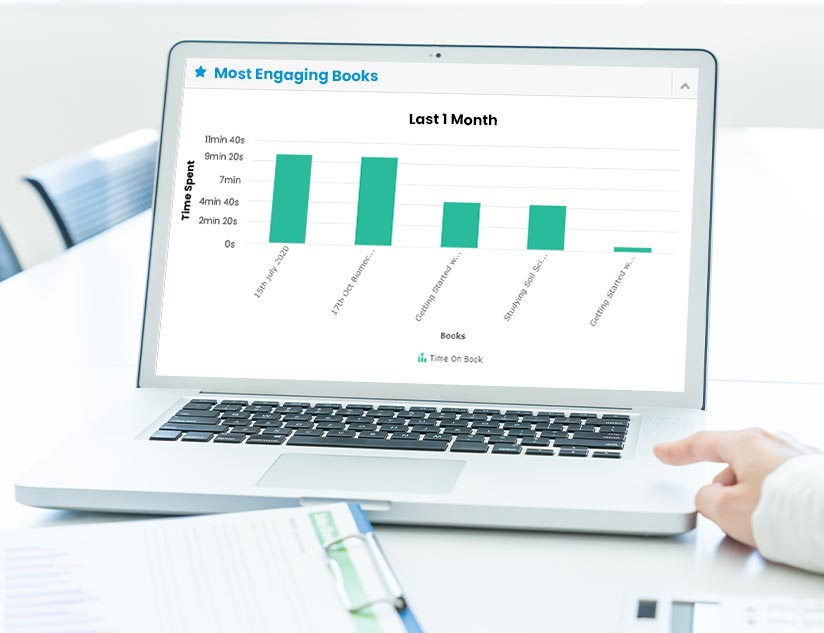Businesses have been using data analytics for years now to make strategic decisions. The education segment can leverage the same benefits with the help of learning analytics. With the increasing use of online learning platforms, vast amounts of student data is being recorded, which can easily be analyzed to understand the efficacy of instruction and student progress. As a result, teachers can better understand their students’ learning capacity and design lessons so that learners are not overloaded with information.
Here’s a more detailed look at how learning analytics can benefit students and educators alike.
Monitor Student Progress
Custom analytic reports can help teachers identify the weak areas of each student. For example, learning analytics can offer information on how each student accesses learning materials, time spent on each title, assignment, or assessment score, and much more at one glance. Analytics can also offer insights into students who might be at risk of falling behind or dropping out, apart from identifying learning gaps.
When the performance of some students is poorer than that of the rest of their class, it could indicate difficulties in coping with the pace of the lessons or an inability to grasp certain concepts. Paying greater attention to support such students can go a long way to improve their academic outcomes.
Enhance Student Engagement
Learning analytics provides multiple insights into learner behavior, including engagement levels. For instance, time spent on the LMS or a specific lesson can be a good indicator of whether the student finds the topic engaging. Teachers can also check which content pieces were viewed, how often a video was watched, an audio clip played, etc.
Such profound insights can help teachers plan lessons to be more interactive, while education publishers can use the same wisdom to create more interactive learning materials.
Create Personalized Learning Paths
Using insights regarding learning gaps, assessment scores, and more, teachers can customize lesson plans and assignments for each student. Slower learners need no longer be left behind, nor do quick learners need to wait for others to catch up. With the right learning analytics, teachers can support each student and suggest additional resources for students who wish to explore a concept in greater depth.
Personalized learning enhances engagement and concept understanding, which, in turn, drives better academic outcomes.
Improve Instruction
Educators can work on improving the overall quality of their instruction by using analytics to understand how to modify their approach for each grade they teach. For example, with insights into learner behavior, teachers can decide where a video tutorial could add value and where real-life simulations could help students understand concepts better. In addition, they could try flipped classrooms or collaborative assignments to drive better learning based on analytic insights.
But teachers and students aren’t the only participants in the education industry to benefit from learning analytics.
Benefits for School/District Administrators
With data-driven insights, administrators, program directors, and others can monitor course/program performance. They can also use analytics to compare across courses to understand what works and what doesn’t. Some of the questions administrators can get answers to with the use of learning analytics are:
- Which courses/titles/learning resources are the most engaging?
- Which “hot spots” need attention regarding weak learning outcomes or low engagement levels?
- Are there learner behaviors or engagement patterns associated with concept retention?
In addition, analytics can help with critical administrative or funding decisions, such that resources are used optimally to promote better academic performance.
Benefits for Educational Publishers
Analytics reports can guide publishers regarding which content formats students find most engaging, topics that are difficult to understand, learning materials that are the most preferred, etc. This can help them modify their offerings to ensure better adoption and monetization. Learning analytics can also help identify gaps, accessibility, and inclusivity issues. This can guide publishers to ensure digital equity in education.
Analytics can also provide insights that help publishers customize content and plan effective marketing strategies to drive business growth.
All the above benefits across stakeholders in the education segment can only be achieved by partnering with a powerful learning and content distribution platform armed with cutting-edge analytics and reporting tools.
Are you looking for a platform that offers actionable insights into learner behavior? Talk to the experts at MagicBox™ to learn how a cloud-hosted, SaaS-based content creation and distribution platform can help you improve learning outcomes.













